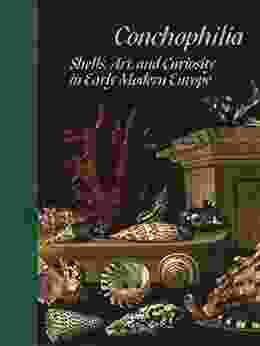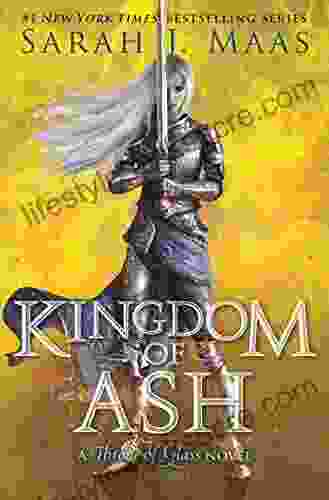Shells Art and Curiosity in Early Modern Europe: A Journey Through Time, Beauty, and Scientific Discovery

In the tapestry of human history, shells have played an enchanting role, capturing the imaginations of artists, collectors, and scientists alike. From their exquisite beauty to their enigmatic origins, shells have been a source of inspiration and wonder since time immemorial. In the early modern era of Europe, from the 15th to the 19th centuries, shells experienced a surge in popularity, becoming an integral part of art, fashion, and scientific inquiry. This article delves into the fascinating world of shells in early modern Europe, exploring their artistic significance, the allure of collecting, and their pivotal role in scientific discovery.
Shells as Art and Ornamentation
The allure of shells as objects of beauty was recognized early on by European artists. During the Renaissance, shells began to appear in paintings and sculptures, often as symbols of wealth, luxury, and refinement. Artists such as Sandro Botticelli, Titian, and Caravaggio depicted seashells in their works, using them to enhance the sensory appeal and narrative depth of their compositions.
4.8 out of 5
| Language | : | English |
| File size | : | 32300 KB |
| Text-to-Speech | : | Enabled |
| Screen Reader | : | Supported |
| Enhanced typesetting | : | Enabled |
| Print length | : | 224 pages |
By the 17th century, shells had become highly sought-after decorative elements in both secular and religious art. They were incorporated into jewelry, furniture, and other luxury objects, adding a touch of exoticism and natural beauty to interiors. In some cases, shells were even used as architectural embellishments, adorning palaces, churches, and other grand structures.
The Curious World of Shell Collecting
Concurrent with the artistic fascination with shells arose a burgeoning interest in collecting them. This pursuit, known as conchology, became a fashionable pastime among the elite and wealthy. Collectors amassed vast cabinets of curiosities, which often included a wide variety of natural specimens, including shells. These collections were not merely displays of beauty but also served as valuable scientific resources for scholars and naturalists.
Conchology was particularly popular in the Netherlands, where collectors such as Fredrick Ruysch and Albertus Seba amassed extraordinary collections. In England, the Duchess of Portland's cabinet of curiosities boasted over 1,500 different species of shells, making it one of the most extensive and impressive collections in Europe.
Shells in Scientific Discovery
Beyond their aesthetic appeal and collectability, shells also played a pivotal role in scientific discovery. During the 18th century, naturalists such as Carl Linnaeus and Georges-Louis Leclerc, Comte de Buffon, began to study shells systematically, using them to develop taxonomic classifications and understand the diversity of life on Earth.
Shells provided valuable insights into the evolutionary relationships between species and the principles of biogeography. By comparing the morphology and distribution of shells from different parts of the world, scientists began to piece together a more comprehensive understanding of the natural world.
Shell Grottoes and the Romantic Imagination
In the mid-18th century, a new form of shell art emerged in Europe: the shell grotto. These whimsical and enchanting spaces were created by embedding vast quantities of shells into walls, floors, and ceilings. They became popular retreats for the wealthy and aristocratic, who sought to escape the bustling city life and immerse themselves in a world of natural beauty and tranquility.
Shell grottoes were often elaborately designed, incorporating intricate patterns, mosaics, and sculptural elements. They were also frequently adorned with water features, such as fountains and ponds, which created a soothing and atmospheric ambiance.
The Shells of the Baroque
In the Baroque period, shells became a dominant motif in architecture, painting, and sculpture. Their sinuous shapes and intricate patterns mirrored the exuberant and decorative style that characterized the Baroque era. Artists such as Gian Lorenzo Bernini, Francesco Borromini, and Peter Paul Rubens incorporated shells into their works, using them to create dynamic compositions and evoke a sense of grandeur and opulence.
In architecture, shells were often used to adorn facades and interiors, adding a touch of natural elegance to buildings. In painting and sculpture, they were depicted in a variety of ways, from realistic representations to stylized interpretations that emphasized their ornamental qualities.
Legacy and Influence
The fascination with shells in early modern Europe left an enduring legacy on art, science, and culture. Shells continued to be a popular decorative motif throughout the 19th century and into the 20th century, influencing everything from jewelry design to interior decor. In science, the study of shells played a crucial role in the development of taxonomy, biogeography, and evolutionary theory.
Today, shells remain a source of inspiration and wonder. Artists, designers, and scientists alike continue to be drawn to their beauty, diversity, and scientific significance. The legacy of shells art and curiosity in early modern Europe is a testament to the enduring power and fascination of these enigmatic natural wonders.
Shells have played a multifaceted role in human history, from their practical uses as tools and currency to their symbolic and artistic significance. In early modern Europe, shells experienced a surge in popularity, becoming an integral part of art, fashion, and scientific inquiry. Their beauty, curiosity, and scientific value made them a captivating subject for artists, collectors, and scientists alike. The legacy of shells in early modern Europe continues to inspire and inform our understanding of art, science, and the natural world.
Image Descriptions
- Figure 1: A Renaissance painting by Sandro Botticelli featuring a figure holding a seashell. The shell is depicted in great detail, with its delicate curves and intricate patterns.
- Figure 2: A baroque sculpture by Gian Lorenzo Bernini depicting a triton blowing a conch shell. The shell is carved with great realism, showcasing its sinuous shape and intricate details.
- Figure 3: A shell grotto in England adorned with vast quantities of shells. The shells are embedded into the walls and ceiling, creating a whimsical and enchanting space.
- Figure 4: A collection of shells displayed in a cabinet of curiosities. The shells are arranged in a systematic manner, showcasing their diversity of shapes, colors, and patterns.
- Figure 5: A scientific illustration of a shell by Georges-Louis Leclerc, Comte de Buffon. The illustration is detailed and accurate, demonstrating the scientific value of shells in understanding the natural world.
Relevant Long Descriptive Keywords for Alt Attributes
* **Figure 1:** Renaissance painting, Sandro Botticelli, seashell, intricate patterns * **Figure 2:** Baroque sculpture, Gian Lorenzo Bernini, triton, conch shell, realistic carving * **Figure 3:** Shell grotto, England, vast quantity of shells, whimsical and enchanting space * **Figure 4:** Cabinet of curiosities, collection of shells, systematic arrangement, diversity of shapes and colors * **Figure 5:** Scientific illustration, Georges-Louis Leclerc, Comte de Buffon, shell, detailed and accurate
Long Tail SEO Title
Shells Art and Curiosity in Early Modern Europe: A Journey Through Time, Beauty, and Scientific Discovery:
* The Allure of Shells in Renaissance and Baroque Art * The Rise of Shell Collecting: A Fashionable Pastime * Shells as a Catalyst for Scientific Exploration * The Enchanting World of Shell Grottoes * The Legacy of Shells in Art, Science, and Culture
4.8 out of 5
| Language | : | English |
| File size | : | 32300 KB |
| Text-to-Speech | : | Enabled |
| Screen Reader | : | Supported |
| Enhanced typesetting | : | Enabled |
| Print length | : | 224 pages |
Do you want to contribute by writing guest posts on this blog?
Please contact us and send us a resume of previous articles that you have written.
 Fiction
Fiction Non Fiction
Non Fiction Romance
Romance Mystery
Mystery Thriller
Thriller SciFi
SciFi Fantasy
Fantasy Horror
Horror Biography
Biography Selfhelp
Selfhelp Business
Business History
History Classics
Classics Poetry
Poetry Childrens
Childrens Young Adult
Young Adult Educational
Educational Cooking
Cooking Travel
Travel Lifestyle
Lifestyle Spirituality
Spirituality Health
Health Fitness
Fitness Technology
Technology Science
Science Arts
Arts Crafts
Crafts DIY
DIY Gardening
Gardening Petcare
Petcare Cody Monk
Cody Monk Randall E Schumacker
Randall E Schumacker Joe Dan Lowry
Joe Dan Lowry Robert A Weinberg
Robert A Weinberg Jack Weatherford
Jack Weatherford William Stillman
William Stillman Howard J Meditz
Howard J Meditz Clancy Cavnar
Clancy Cavnar Randy Schultz
Randy Schultz Antonio R Damasio
Antonio R Damasio Glenn Stout
Glenn Stout Dana Obleman
Dana Obleman Heidi J Larson
Heidi J Larson Saleh Alkhalifa
Saleh Alkhalifa Marshall Goldsmith
Marshall Goldsmith Kyle Hunt
Kyle Hunt Dan Schlossberg
Dan Schlossberg Laura Slinn
Laura Slinn Joseph Conrad
Joseph Conrad Dave Hanson
Dave Hanson Alan I Marcus
Alan I Marcus Shalabh Aggarwal
Shalabh Aggarwal David Guymer
David Guymer Fred Pyrczak
Fred Pyrczak Jonathan Law
Jonathan Law Brian Pace
Brian Pace Dr Scott A Johnson
Dr Scott A Johnson Cheri Rae
Cheri Rae Stephen Walker
Stephen Walker Suzanne Stabile
Suzanne Stabile Jason Thompson
Jason Thompson L Frank Baum
L Frank Baum Frederick Lenz
Frederick Lenz Ruta Nonacs
Ruta Nonacs Amy B Middleman
Amy B Middleman Ana And Jack Hicks
Ana And Jack Hicks Jack Nisbet
Jack Nisbet J L Weil
J L Weil Ned Seaton
Ned Seaton Robyn Davidson
Robyn Davidson Kenneth P Stephens
Kenneth P Stephens Kathleen Glasgow
Kathleen Glasgow Nina Freudenberger
Nina Freudenberger Claudia J Carr
Claudia J Carr Nisha Garg
Nisha Garg Lizabeth Hardman
Lizabeth Hardman E T Bryant
E T Bryant Jean Rose
Jean Rose David Elkington
David Elkington Dima Zales
Dima Zales Therese A Rando
Therese A Rando Sarah Morgan Haydock
Sarah Morgan Haydock Amy Camp
Amy Camp Jayson Gaddis
Jayson Gaddis Jocelyn Goodwin
Jocelyn Goodwin Tahlia Kirk
Tahlia Kirk Amante P Marinas
Amante P Marinas Kathy A Zahler
Kathy A Zahler Joseph Klaits
Joseph Klaits Md Rezowan Ahmed
Md Rezowan Ahmed Sonia Hartl
Sonia Hartl Louise Bates Ames
Louise Bates Ames Marisa Anne Bass
Marisa Anne Bass Tom Taulli
Tom Taulli Amir Alexander
Amir Alexander Marco Ferrero
Marco Ferrero Brendan Leonard
Brendan Leonard Cynthia Gabriel
Cynthia Gabriel Dr Elizabeth Cherevaty Nd Rac
Dr Elizabeth Cherevaty Nd Rac Paul Dickson
Paul Dickson Eric Tyndall
Eric Tyndall Don Orwell
Don Orwell Jennifer Margulis
Jennifer Margulis Rich Rousseau
Rich Rousseau Gail Maccoll
Gail Maccoll Neville Goddard
Neville Goddard Shere Hite
Shere Hite Jack Ewing
Jack Ewing Helen E Fisher
Helen E Fisher Vicki Hearne
Vicki Hearne Kate Fox
Kate Fox Tabitha Suzuma
Tabitha Suzuma Tom Deck
Tom Deck Rosalind Wiseman
Rosalind Wiseman Tim Marshall
Tim MarshallK D
 Michael Cosgrove
Michael Cosgrove Lars Andersen
Lars Andersen Shaun Gallagher
Shaun Gallagher Deborah Vinall Psyd Lmft
Deborah Vinall Psyd Lmft Charles Thompson
Charles Thompson Victoria Richards
Victoria Richards Michaela Riva Gaaserud
Michaela Riva Gaaserud Camille Glenn
Camille Glenn Eugene C Toy
Eugene C Toy Michael Reichert
Michael Reichert Joan Freeman
Joan Freeman Jameson M Wetmore
Jameson M Wetmore Robb Walsh
Robb Walsh Terry Wieland
Terry Wieland Spike Dykes
Spike Dykes Peter Larson
Peter Larson Shanna Cunning
Shanna Cunning Chris Irons
Chris Irons Amber Lee Sellers
Amber Lee Sellers Zeshan Qureshi
Zeshan Qureshi Brittany Clair
Brittany Clair Meikang Qiu
Meikang Qiu Sue Monk Kidd
Sue Monk Kidd Jerry D Moore
Jerry D Moore Eric T Knight
Eric T Knight Kris Leonard
Kris Leonard Ellie Wood
Ellie Wood Melody Schreiber
Melody Schreiber Mac Fortner
Mac Fortner Sian Warriner
Sian Warriner Stanley J Farlow
Stanley J Farlow Philippa Langley
Philippa Langley Joe Nickell
Joe Nickell Amy Perry
Amy Perry Wolf Moon
Wolf Moon Gal Dem
Gal Dem Chloe Gong
Chloe Gong Cordelia K Castel
Cordelia K Castel James Mullaney
James Mullaney Rosanna Davison
Rosanna Davison Amara Charles
Amara Charles Rodney M Howard Browne
Rodney M Howard Browne Michael Abayomi
Michael Abayomi C W Lockhart
C W Lockhart Paul Wieland
Paul Wieland Sarah Woodbury
Sarah Woodbury Sandra Luna Mccune
Sandra Luna Mccune Amber Smith
Amber Smith Jeremy J Baumberg
Jeremy J Baumberg Heather Macfadyen
Heather Macfadyen Nicholas A Christakis
Nicholas A Christakis Byron Nelson
Byron Nelson William Bohan
William Bohan Anthony Horowitz
Anthony Horowitz Amy Bizzarri
Amy Bizzarri Jim Santos
Jim Santos Marit Weisenberg
Marit Weisenberg Joseph P Weir
Joseph P Weir Julie Schacht Sway
Julie Schacht Sway Md Mahady Hasan
Md Mahady Hasan Summer Michaud Skog
Summer Michaud Skog Don Mann
Don Mann Craig Larman
Craig Larman A Sorority Of Mothers
A Sorority Of Mothers Doug Peterson
Doug Peterson John Mcpherson
John Mcpherson Alexandrea Weis
Alexandrea Weis Erika Napoletano
Erika Napoletano Warren B Powell
Warren B Powell Silvia Botros
Silvia Botros Amelia Parker
Amelia Parker John A Buehrens
John A Buehrens Michael R Poll
Michael R Poll Art Star
Art Star Torey L Hayden
Torey L Hayden Nicholeen Peck
Nicholeen Peck John Lukacs
John Lukacs Rick Stanton
Rick Stanton Susan White
Susan White Kathleen M Stacy
Kathleen M Stacy Kate Tietje
Kate Tietje Erik Qualman
Erik Qualman Stanley I Greenspan
Stanley I Greenspan Sheri Van Dijk
Sheri Van Dijk Tracy Lorraine
Tracy Lorraine Stephen M Barr
Stephen M Barr Amit Saha
Amit Saha Janet Engle
Janet Engle Chad Starkey
Chad Starkey Bill Carter
Bill Carter P Aarne Vesilind
P Aarne Vesilind Mark Taylor
Mark Taylor Stephen J Collier
Stephen J Collier Steven Charleston
Steven Charleston Mark Turley
Mark Turley William G Dever
William G Dever Holly Herrick
Holly Herrick Christopher Harlan
Christopher Harlan Mark Stallard
Mark Stallard Angela Moore
Angela Moore Krystal Sutherland
Krystal Sutherland William Glasser M D
William Glasser M D Benjamin Jelen
Benjamin Jelen Tom Patri
Tom Patri Buck Tilton
Buck Tilton Ignatius Donnelly
Ignatius Donnelly American Baseball Coaches Association
American Baseball Coaches Association Patricia L Papernow
Patricia L Papernow Kezia Endsley
Kezia Endsley Karen Deerwester
Karen Deerwester Rachel Gurevich
Rachel Gurevich Jacob Bronowski
Jacob Bronowski Laini Taylor
Laini Taylor Gary Wiener
Gary Wiener Arlene Blum
Arlene Blum Autumn Jordon
Autumn Jordon Richard Wagamese
Richard Wagamese Trent Shelton
Trent Shelton Thom Hartmann
Thom Hartmann Gerald Corey
Gerald Corey Candy Verney
Candy Verney Jd Mader
Jd Mader Sean Gibson
Sean Gibson American Psychological Association
American Psychological Association Amber Zygutis
Amber Zygutis Jon Bonnell
Jon Bonnell Carlo Buzzichelli
Carlo Buzzichelli Jessica Hatcher Moore
Jessica Hatcher Moore Amy Adele Hasinoff
Amy Adele Hasinoff Jeffrey Steadman
Jeffrey Steadman William Rosen
William Rosen Denise Ni
Denise Ni Desi Northup
Desi Northup Harley Reid
Harley Reid Don Bowers
Don Bowers Jean Christie Ashmore
Jean Christie Ashmore Eric Zweig
Eric Zweig Jeff Gaudette
Jeff Gaudette Robert Melillo
Robert Melillo Topher Donahue
Topher Donahue George Bernard Shaw
George Bernard Shaw Paul Graham
Paul Graham Larry K Brendtro
Larry K Brendtro Henry A Zumbrun 2
Henry A Zumbrun 2 Michael Ondaatje
Michael Ondaatje Temple Grandin
Temple Grandin Marina Robb
Marina Robb Mark Worden
Mark Worden Maria Youtman
Maria Youtman Stephen Barr
Stephen Barr Anne Chambers
Anne Chambers Brian Klaas
Brian Klaas Test Masters
Test Masters Douglas Wilson
Douglas Wilson Kristine Kathryn Rusch
Kristine Kathryn Rusch Cookie O Gorman
Cookie O Gorman Frank Nappi
Frank Nappi Amie Lands
Amie Lands Josiah Hesse
Josiah Hesse Elise Christie
Elise Christie Tamora Pierce
Tamora Pierce Malba Tahan
Malba Tahan Jean Van T Hul
Jean Van T Hul Jenny Landreth
Jenny Landreth Laurie A Watkins
Laurie A Watkins Toni Tone
Toni Tone Norman Doidge
Norman Doidge Lady Antiva
Lady Antiva Reinhold Messner
Reinhold Messner Hadley Wickham
Hadley Wickham Vince Kotchian
Vince Kotchian Cathy Williams
Cathy Williams Kathy Spratt
Kathy Spratt Grant Dever
Grant Dever Michael Winkelman
Michael Winkelman Mike Adamick
Mike Adamick Shannon O Bourne
Shannon O Bourne Traci Gormley
Traci Gormley Joel Cotton
Joel Cotton Timothy Malcolm
Timothy Malcolm Charles Hall
Charles Hall Sean Go
Sean Go Guillaume Haeringer
Guillaume Haeringer Erin Chack
Erin Chack Amira Mikhail
Amira Mikhail John Ferrell
John Ferrell Jack Falla
Jack Falla Mariano Anaya
Mariano Anaya Umer W
Umer W Dan Abnett
Dan Abnett Erica T Lehrer
Erica T Lehrer Chris Carlsson
Chris Carlsson Edward J Denecke
Edward J Denecke Helena P Blavasky
Helena P Blavasky Amelia Edith Huddleston Barr
Amelia Edith Huddleston Barr Paul Kockelman
Paul Kockelman John Jacobs
John Jacobs Django Paris
Django Paris Isabella Krystynek
Isabella Krystynek Joseph Howse
Joseph Howse Devin Olsen
Devin Olsen Jeanne Ryan
Jeanne Ryan Trevor Day
Trevor Day Nathan Belofsky
Nathan Belofsky C L Simchick
C L Simchick Chad Ford
Chad Ford Wade Rouse
Wade Rouse Naomi Oreskes
Naomi Oreskes Steve Greenberg
Steve Greenberg Lisa Maloney
Lisa Maloney Lisa Zimmer Hatch
Lisa Zimmer Hatch Nikhil Bhardwaj
Nikhil Bhardwaj Derrick Jensen
Derrick Jensen Ryan Gray
Ryan Gray Sarah J Maas
Sarah J Maas Jan E Stets
Jan E Stets Bethanne Kim
Bethanne Kim Josephine Atluri
Josephine Atluri Ray Mancini
Ray Mancini Kasie West
Kasie West Stephen Goodwin
Stephen Goodwin Richard Cohen
Richard Cohen Jessica Cunsolo
Jessica Cunsolo Sandra Bardwell
Sandra Bardwell James P Kelly
James P Kelly Mitt Romney
Mitt Romney Joseph Wayne Smith
Joseph Wayne Smith Andrey Ryanskiy
Andrey Ryanskiy Iain Pardoe
Iain Pardoe Josh Taylor
Josh Taylor Katherine Kurtz
Katherine Kurtz Amber O Neal Johnston
Amber O Neal Johnston Garrett M Fitzmaurice
Garrett M Fitzmaurice Tanya Turner
Tanya Turner Kieron Gillen
Kieron Gillen H Bedford Jones
H Bedford Jones Amy Blakeslee
Amy Blakeslee Courtney Defeo
Courtney Defeo Thomas J Whalen
Thomas J Whalen Derek Thompson
Derek Thompson Michelle Newhart
Michelle Newhart Christopher E Larsen
Christopher E Larsen Amber Lia
Amber Lia Catherine Dees
Catherine Dees Christopher Cousteau
Christopher Cousteau Pav Bryan
Pav Bryan Eugenia Viti
Eugenia Viti Dom Amore
Dom Amore June Cl Tan
June Cl Tan Paul Kaplowitz
Paul Kaplowitz Johan Norberg
Johan Norberg Rose Mannering
Rose Mannering Tom Colicchio
Tom Colicchio Valerie Bass
Valerie Bass Martin Pollizotto
Martin Pollizotto Julie Barlow
Julie Barlow Wendy Margolis
Wendy Margolis Deborah J Rumsey
Deborah J Rumsey David Burch
David Burch Joellen Patterson
Joellen Patterson Nick Kolenda
Nick Kolenda Kumo Kagyu
Kumo Kagyu Jack Freeman
Jack Freeman Andy Couturier
Andy Couturier Paul Oliver
Paul Oliver Pinky Mckay
Pinky Mckay Bruce Dowbiggin
Bruce Dowbiggin Martin Williams
Martin Williams Ananda Lowe
Ananda Lowe Pamela Lynn
Pamela Lynn Elizabeth S Gilbert
Elizabeth S Gilbert Candida Lawrence
Candida Lawrence Vinod Kumar Khanna
Vinod Kumar Khanna J Stephen Jones
J Stephen Jones Alex Polyakov
Alex Polyakov John Maxwell Wood
John Maxwell Wood American Math Academy
American Math Academy Oscar Baechler
Oscar Baechler Christina Kamp
Christina Kamp Joe Dante
Joe Dante Tyler Simmons
Tyler Simmons Don Stradley
Don Stradley Theodore Sider
Theodore Sider Rob Antoun
Rob Antoun Charles J Alsheimer
Charles J Alsheimer Eric E Bowne
Eric E Bowne Diane Greer
Diane Greer J Marin Younker
J Marin Younker David Grinspoon
David Grinspoon Jake Maddox
Jake Maddox Amy Brown
Amy Brown Sarah Dessen
Sarah Dessen Jennifer S Kelly
Jennifer S Kelly Emma Mae Jenkins
Emma Mae Jenkins Ruth Nestvold
Ruth Nestvold Robert W D Ball
Robert W D Ball Vivian Vande Velde
Vivian Vande Velde Gia Giasullo
Gia Giasullo Donovan Hohn
Donovan Hohn Ronda Rousey
Ronda Rousey Leslie Sansone
Leslie Sansone Andy Hunt
Andy Hunt Matthew L Martin
Matthew L Martin Philip Gibson
Philip Gibson Roman Gelperin
Roman Gelperin Peter Worley
Peter Worley Ashley Scott
Ashley Scott Julie Caplin
Julie Caplin David Salsburg
David Salsburg Tijan
Tijan Julie Mosier
Julie Mosier Joe E Harvey
Joe E Harvey Andy Singleton
Andy Singleton Amy Bleuel
Amy Bleuel Catherine Ryan Gregory
Catherine Ryan Gregory Muhammad Vandestra
Muhammad Vandestra Stephenie Meyer
Stephenie Meyer Sarah Sumbal
Sarah Sumbal Sheena Johnstone
Sheena Johnstone James W Williams
James W Williams Theresa I Soto
Theresa I Soto Bridget Ericsson
Bridget Ericsson Cole Hersowitz
Cole Hersowitz Amelia Freer
Amelia Freer Kresley Cole
Kresley Cole John Bingham
John Bingham Michael Parker Pearson
Michael Parker Pearson K M Shea
K M Shea Ned Vizzini
Ned Vizzini Jonathan Bartlett
Jonathan Bartlett Amie Kaufman
Amie Kaufman Danny Dreyer
Danny Dreyer Sandra T Barnes
Sandra T Barnes Patrick O Sullivan
Patrick O Sullivan Liz Fosslien
Liz Fosslien David Ranney
David Ranney Jason Borte
Jason Borte David Yoon
David Yoon Amy Mccready
Amy Mccready Theresa Y Wee M D
Theresa Y Wee M D Brian Kateman
Brian Kateman Jeff Martone
Jeff Martone Sharon K Zumbrunn
Sharon K Zumbrunn Jack Tupp
Jack Tupp Amy Baldwin
Amy Baldwin Paul Schwartz
Paul Schwartz Steven C Hayes
Steven C Hayes Gina Chen
Gina Chen Jenni Hicks
Jenni Hicks Amby Cooper
Amby Cooper Christine Fanthome
Christine Fanthome Donna Williams
Donna Williams Adam Cort
Adam Cort Kate Parham Kordsmeier
Kate Parham Kordsmeier Anna B Doe
Anna B Doe Matthew Lombardi
Matthew Lombardi Victor J Stenger
Victor J Stenger Pico Iyer
Pico Iyer Alan Margot
Alan Margot Jonathon Miller Weisberger
Jonathon Miller Weisberger Rick Deutsch
Rick Deutsch Mark W T Harvey
Mark W T Harvey Elizabeth Lim
Elizabeth Lim The 60 Minutes Summary
The 60 Minutes Summary Alex Stone
Alex Stone Ken Chaddock
Ken Chaddock Rob Fisher
Rob Fisher Swede Burns
Swede Burns Anthony Haynes
Anthony Haynes James E Packer
James E Packer Jan Marie Mueller
Jan Marie Mueller Sterling Test Prep
Sterling Test Prep Nikala Smith
Nikala Smith Amiee Mueller
Amiee Mueller Peter Hayes
Peter Hayes Dolores Kong
Dolores Kong Amber Foster
Amber Foster K F Breene
K F Breene John L Field
John L Field Deborah Lipsky
Deborah Lipsky Susanna Heli
Susanna Heli Redmond O Hanlon
Redmond O Hanlon Ruth M Tappen
Ruth M Tappen Kevin Stiegelmaier
Kevin Stiegelmaier Tavi Gevinson
Tavi Gevinson Tim Hornbaker
Tim Hornbaker Joseph Mcmoneagle
Joseph Mcmoneagle Laekan Zea Kemp
Laekan Zea Kemp Dr Bob Rotella
Dr Bob Rotella Victoria Wood
Victoria Wood Clotaire Rapaille
Clotaire Rapaille Amrita Pande
Amrita Pande Dmv Test Bank
Dmv Test Bank
Light bulbAdvertise smarter! Our strategic ad space ensures maximum exposure. Reserve your spot today!
 Kenzaburō ŌeFollow ·17.1k
Kenzaburō ŌeFollow ·17.1k Henry JamesFollow ·17.2k
Henry JamesFollow ·17.2k Barry BryantFollow ·16.2k
Barry BryantFollow ·16.2k Brady MitchellFollow ·19k
Brady MitchellFollow ·19k Juan ButlerFollow ·16.5k
Juan ButlerFollow ·16.5k Cason CoxFollow ·3k
Cason CoxFollow ·3k Everett BellFollow ·4.9k
Everett BellFollow ·4.9k Eric HayesFollow ·13.8k
Eric HayesFollow ·13.8k

 Ira Cox
Ira CoxUnveiling the Hidden Gem: Moon, Virginia - A Washington...
Nestled within the picturesque...

 Jorge Luis Borges
Jorge Luis BorgesThe Ultimate Survivalist's Medical Guide: A Comprehensive...
In the realm of...

 Henry Green
Henry GreenDavid Douglas: Exploring the Natural History of the...
David Douglas was a...

 Eric Hayes
Eric HayesUnderstanding Citizenship in a Globalized World: A...
Citizenship is a complex and multifaceted...

 Will Ward
Will WardUnveiling Research Real Talk: Navigating the Labyrinth of...
Research, the...
4.8 out of 5
| Language | : | English |
| File size | : | 32300 KB |
| Text-to-Speech | : | Enabled |
| Screen Reader | : | Supported |
| Enhanced typesetting | : | Enabled |
| Print length | : | 224 pages |














